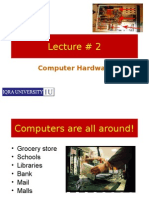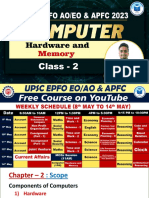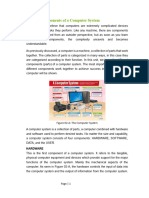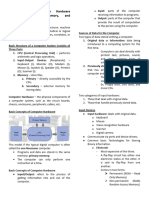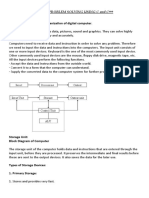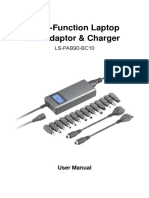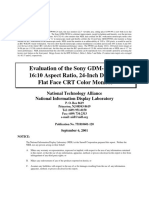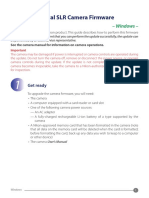0% found this document useful (0 votes)
29 views6 pages5th Class Chapter 1
Chapter 1 provides an introduction to computers, defining them as electronic devices that accept, process, and store data. It outlines the basic features of computers, such as speed, accuracy, and multitasking, and describes various input and output devices. Additionally, it explains the main components of a computer, including the CPU, memory types, and storage devices.
Uploaded by
snehnegi0211Copyright
© © All Rights Reserved
We take content rights seriously. If you suspect this is your content, claim it here.
Available Formats
Download as PDF, TXT or read online on Scribd
0% found this document useful (0 votes)
29 views6 pages5th Class Chapter 1
Chapter 1 provides an introduction to computers, defining them as electronic devices that accept, process, and store data. It outlines the basic features of computers, such as speed, accuracy, and multitasking, and describes various input and output devices. Additionally, it explains the main components of a computer, including the CPU, memory types, and storage devices.
Uploaded by
snehnegi0211Copyright
© © All Rights Reserved
We take content rights seriously. If you suspect this is your content, claim it here.
Available Formats
Download as PDF, TXT or read online on Scribd
/ 6
















